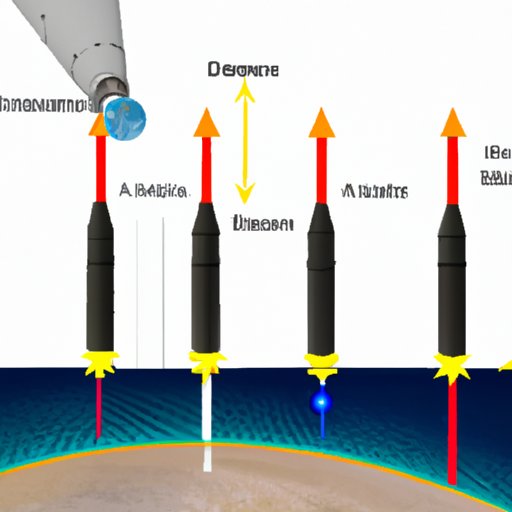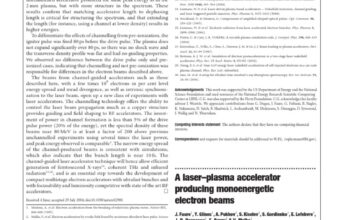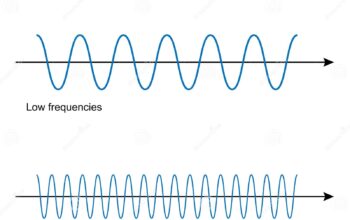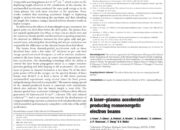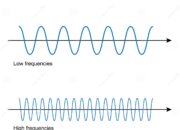Nanostructures have undeniably revolutionized the field of physics, especially regarding the conduction of electrons at the nanoscale. One such structure that has garnered significant attention due to its unique properties and potential applications is the nanoribbon. These slender strips of material, typically made from graphene or other two-dimensional materials, exhibit fascinating behavior when subjected to electrical currents. But how far can these ballistic electrons traverse within a nanoribbon? This query emerges as a playful yet challenging proposition, igniting a discussion that intertwines both theoretical frameworks and practical implications.
Before delving into the specifics of ballistic transport within nanoribbons, it is crucial to clarify what ballistic electrons are. In essence, ballistic electrons are charge carriers that maintain their energy and momentum over relatively long distances without scattering—similar to a projectile that travels through the air with minimal resistance. This behavior becomes increasingly relevant in nanoscale systems, where traditional scattering processes such as phonon and impurity scattering are significantly reduced due to size confinement and increased material purity.
The theoretical foundation for understanding ballistic transport lies within the realm of quantum mechanics. In a typical conductor, electrons undergo frequent scattering events, leading to resistance and energy loss. However, nanoribbons, particularly those composed of materials like graphene, demonstrate a unique feature: the ability of electrons to travel ballistically over considerable distances, often in the order of micrometers. This distance can be viewed as an area of exploration, prompting us to question not only the mechanisms behind this phenomenon but also its practical applications.
Graphene nanoribbons (GNRs) epitomize this concept. The inherent structural properties of graphene, with its honeycomb lattice arrangement of carbon atoms, facilitate high electron mobility. When structured as nanoribbons, their transport properties can be fine-tuned by manipulating the width and edge configurations. This aspect introduces a captivating dichotomy: narrower ribbons tend to express quantum confinement effects, while wider ribbons behave more classically. Such variations lead to the intriguing prospect of developing GNRs with precisely engineered characteristics for specific applications. But how do we harness this unique behavior effectively?
To elaborate on the potential applications, one can conceptualize a range of electronic devices such as field-effect transistors (FETs), sensors, and quantum computing components that operate on the principle of ballistic electron transport. In FETs, the rapid response time and reduced power losses due to ballistic conduction can lead to more efficient and faster switching devices, enhancing overall performance. Security in quantum information technology additionally flourishes from such properties, where the preservation of quantum states over longer distances is critical. Yet, this potential does not come without challenges, presenting a notable dichotomy between theoretical predictions and practical realizations.
One might ponder: what limitations impede the full exploitation of ballistic transport in nanoribbons? While the idyllic concept of unimpeded electron flow tantalizes researchers, environmental variables often intrude. Temperature plays a pivotal role in the scattering processes that can mitigate ballistic transport. Higher thermal energy translates to increased phonon activity, which subsequently enhances scattering rates, thereby restricting the distance that electrons can travel ballistically within the nanoribbon. This creates a complex terrain wherein balance must be struck between optimizing material properties and managing external conditions.
Moreover, the quality and purity of the nanomaterial remain paramount. Defects, impurities, and boundary discontinuities act as nucleation sites for scattering events, drastically reducing the effective ballistic transport distances. Therefore, the fabrication process of nanoribbons becomes an exercise in precision engineering, where one must continuously find innovative techniques to synthesize high-quality materials that minimize imperfections. Techniques such as chemical vapor deposition (CVD) and liquid-phase exfoliation are gaining traction, yet their scalability and reproducibility continue to pose challenges in real-world applications.
Even the dimensionality of the nanoribbon has ramifications on ballistic electron travel. The theories surrounding one-dimensional (1D) conductors highlight unique electrical behavior indicative of quantum phenomena. Such distinctions have implications for creating devices that exploit low-dimensional physics, thereby facilitating the development of ultrafast electronics and high-performance photonic applications. Nonetheless, these advances beckon further inquiries into the stability and reliability of such systems, particularly as they interact with real-world environments.
In addressing the aforementioned challenges, researchers are compelled to adopt interdisciplinary approaches, merging principles from material science, physics, and engineering. The exploration of hybrid systems that integrate nanoribbons with other materials may provide a pathway to overcome existing barriers. Furthermore, advancements in nanofabrication techniques and in-situ characterization methods are ushering in a new era for the investigation of ballistic transport phenomena, allowing for precise control and manipulation of electron trajectories on the nanoscale.
Ultimately, the inquiry into the distances that ballistic electrons can travel within nanoribbons serves as a fulcrum at which multiple scientific disciplines intersect. The quest for enhanced understanding not only engenders the potential for groundbreaking technological advancements but also evokes a spirit of curiosity that drives the research community forward. In closing, while the path toward exploiting ballistic transport in nanoribbons is fraught with challenges, the potential rewards for overcoming these hurdles stand to reshape the landscape of nanotechnology and electronics in profound ways.
